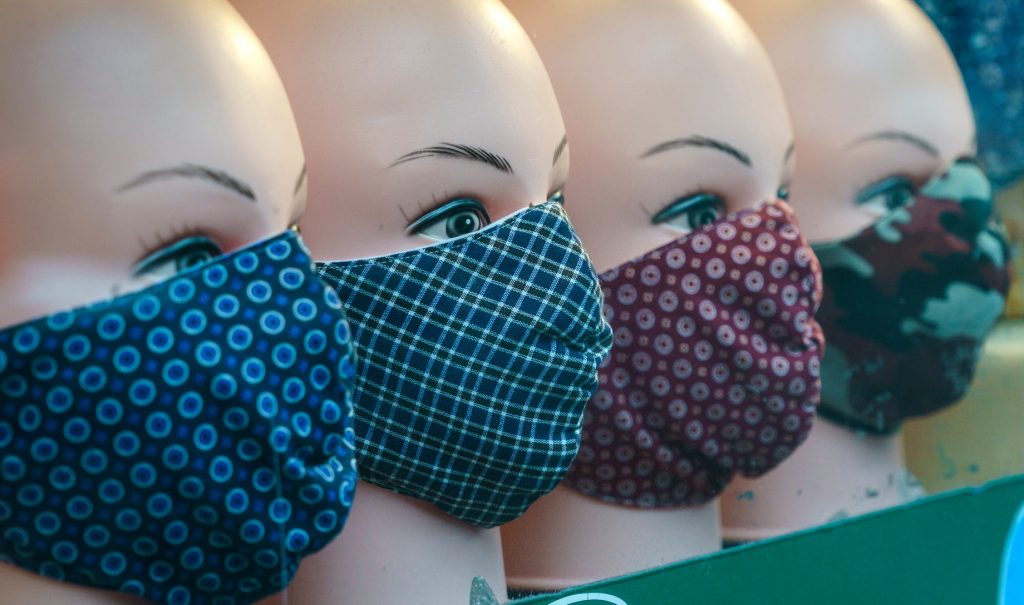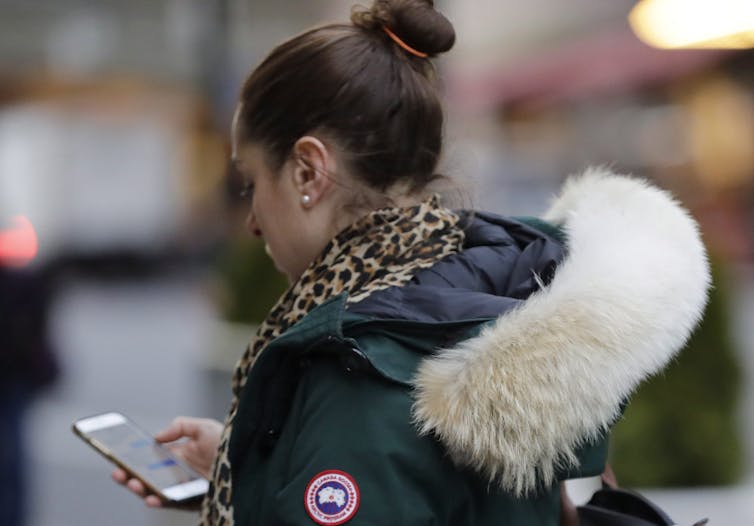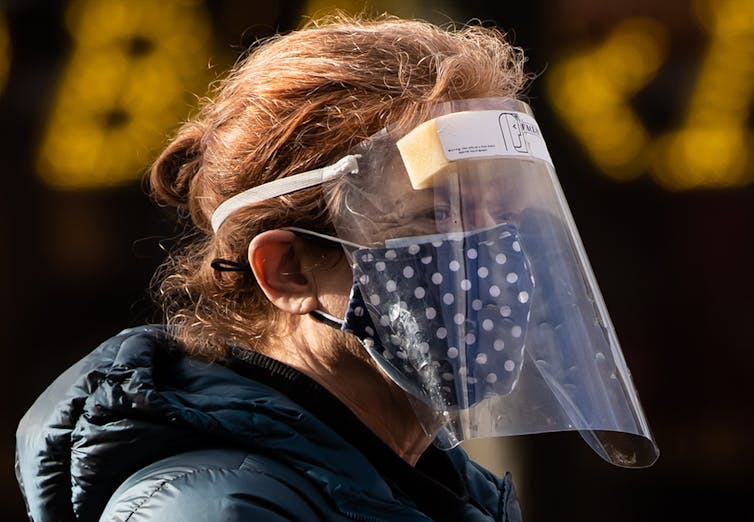COVID-19 masks: A chance to restore Canadian manufacturing

Face masks in the window of a shop during the COVID-19 pandemic in Montréal in December 2020. (THE CANADIAN PRESS/Paul Chiasson)
BY P. Ravi Selvaganapathy
January 11, 2021
It didn’t take long for COVID-19 to race around the world after it emerged in late 2019.
The rapid spread of the coronavirus revealed how efficiently international travel and commerce had flattened distances and erased borders, proving harshly that progress has its negative repercussions. COVID-19 has had the same impact on global economics.
By the time the pandemic struck, it seemed the principles of specialization and division of labour that Adam Smith had expressed in The Wealth of Nations back in 1776 had played out to their fullest. Globalization and trade has led to the concentration of manufacturing of consumer goods in parts of Asia.
Manufacturing shifted to places where large factories and low wages allowed makers of clothing, steel, cars and many other products to maximize the gap between per-unit cost and selling price.
In the process, North America lost much of its industrial base to globalization. Manufacturing cities — including the city of Hamilton, Ont., where I live — have yet to overcome the devastation of the industrial landslide. Entire manufacturing ecosystems have vanished, together with the jobs they sustained.
All of it played out as Smith’s principles had predicted, but one problem even the brilliant economist could not have seen coming was that globalization might one also day threaten our physical health.
That became glaringly apparent in the early weeks of the pandemic, when hospitals, clinics and long-term care facilities suddenly lost access to their regular supply of vital masks, gloves and other protective equipment, almost all of it imported from overseas. Global supply chains are highly efficient but are also fragile.
And yet the news, at least in economic terms, may not all be bad.
Silver lining?
Though the pandemic has become the world’s dominant health concern, it may catalyze recovery from some of the economic consequences of globalization.
Even before COVID-19, globalization’s counterpoint, “localization,” was beginning take hold. Localization brings smaller, more agile and more profitable forms of manufacturing back to places where conditions warrant, adding resilience to the economies of post-industrial countries like Canada.
What localized or distributed manufacturing may lack in brutal efficiency it makes up in value. Canada Goose and Lululemon thrive because their products are perceived to have higher value than their competitors, allowing them to command higher prices.

This allows them to shift from the continuous minimization of manufacturing costs — particularly wages — to continuous improvement of product quality and value, without sacrificing profitability.
This dynamic can help to restore at least some of our lost share of manufacturing. Since we pay workers more, they must produce products that bring higher prices, so Canada needs to be in this area of high value.
How does this relate to personal protective equipment, known as PPE?
PPE market changed dramatically
The pandemic changed the condition of the market. Previously, the sale of gloves, masks and other PPE were all based on price. Whoever made functional, disposable products at the lowest cost captured the market by selling them by the millions to hospitals, long-term care homes and clinics.
Today, masks are necessary for everyone, and in the consumer marketplace, they’ve become personal wearable devices, like cell phones and eyeglasses. Users are prepared to invest more in something that meets their everyday needs, stands up to daily use, is comfortable and looks good.
A typical N95 mask from 3M, which offers the best quality filtration, might cost between one and two dollars.
Reusable, non-medical cloth masks that The Gap sells are not as efficient as 3M’s, but they look much better, can be washed and sell for about $5 apiece. Elsewhere, someone can pay $25 or more for a mask, not because it necessarily offers more protection, but because it looks and feels better.
This consumer demand for higher-priced masks makes it easier to introduce new technologies with better breathability, fit, filtration capability, lifetime and appealing style. These options all have value, which create opportunities for Canadian manufacturers.
Answering the call for face masks, shields
Back in March, my colleagues and I at McMaster University created the Centre of Excellence in Protective Equipment and Materials (CEPEM) in response to a call from Hamilton Health Sciences to start locally manufacturing face masks and face shields to address anticipated shortages.
In just over a month, the CEPEM team created designs, identified suitable materials and developed tests for filtration and fit.
Now, with assistance from the centre, Whitebird, a Hamilton packaging company, is producing 20,000 face shields per day. Niko Apparel, also in Hamilton, is making 20,000 masks per day. Vitacore in British Columbia has started producing hundreds of thousands of “Made in Canada” N95 masks. Woodbridge has already produced millions of level 3 masks in Ontario.

The CEPEM continues to grow and support the nascent PPE manufacturing ecosystem across Canada so it can create high value, next-generation products.
Whether the end users are health-care workers, kids in school or people running errands, they need masks. There’s no reason they shouldn’t be made here at home.![]()
By P. Ravi Selvaganapathy, Professor, Mechanical and Biomedical Engineering, McMaster University. This article is republished from The Conversation under a Creative Commons license. Read the original article.


